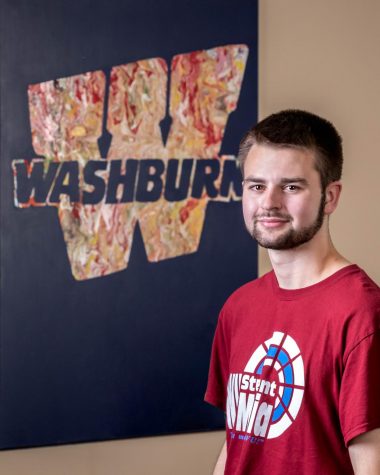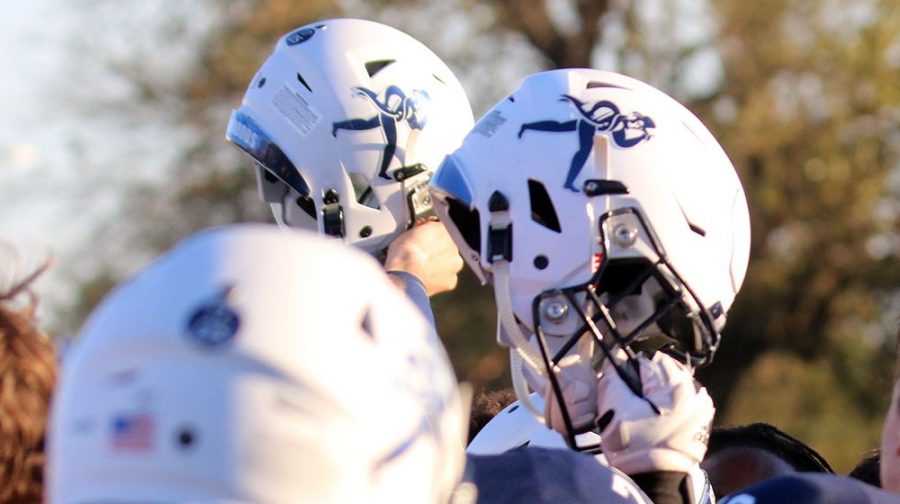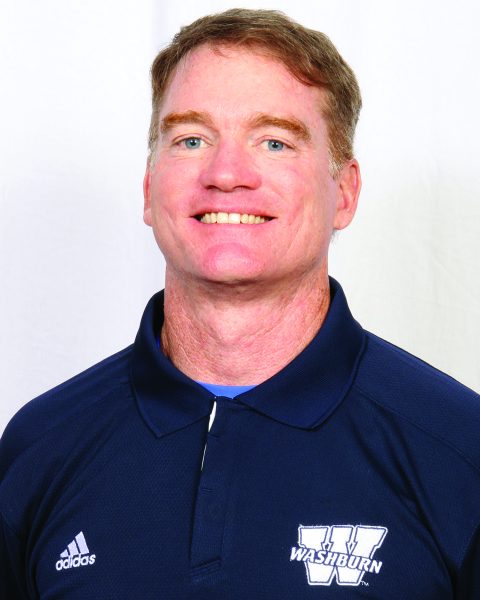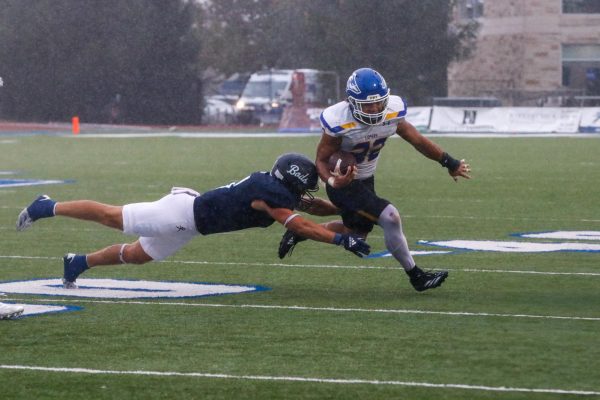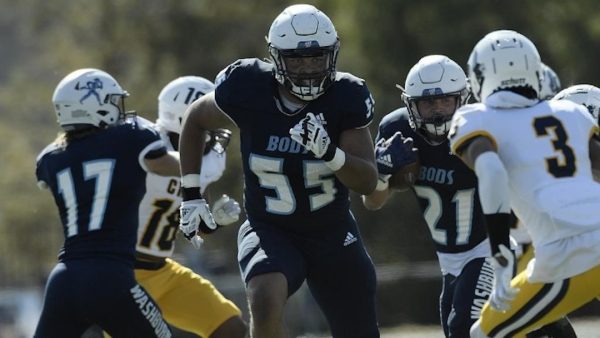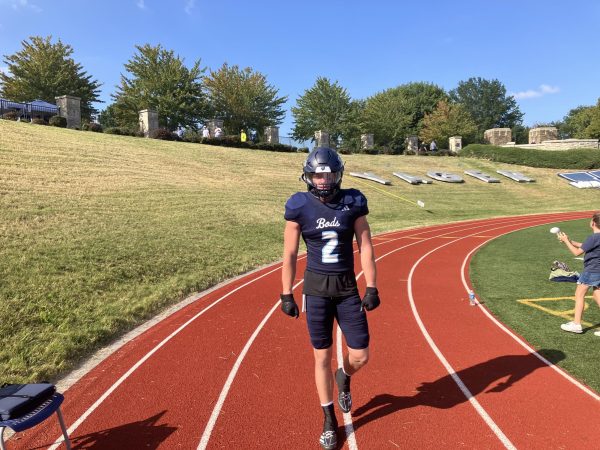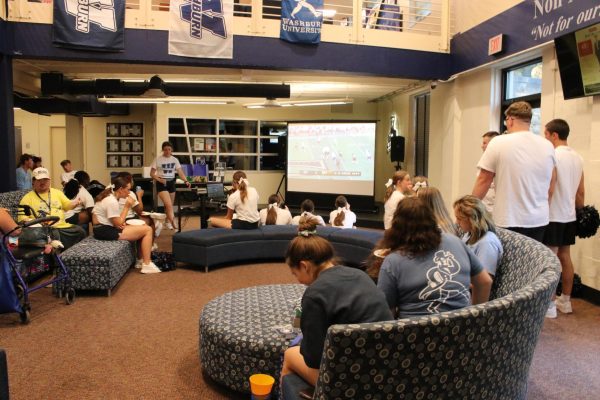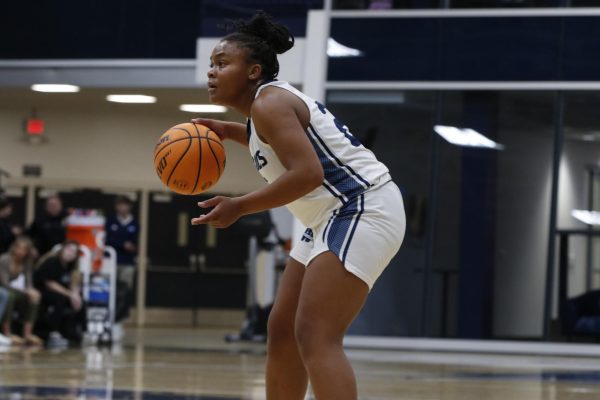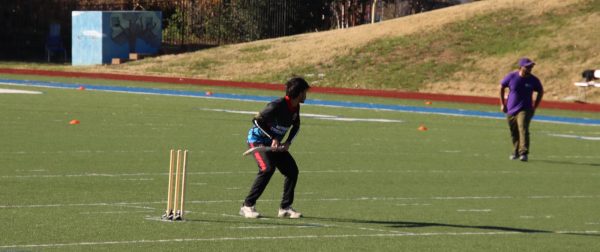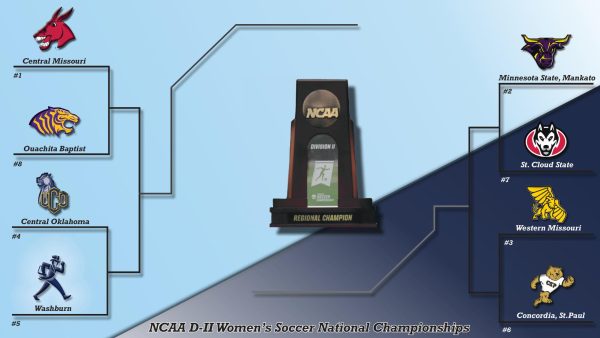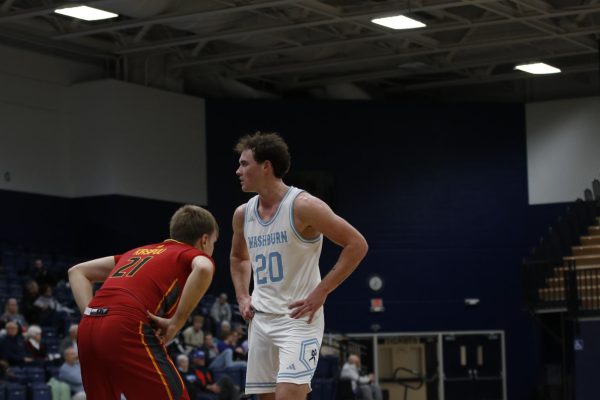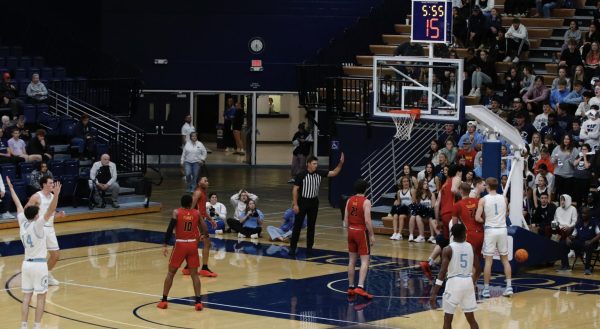The future after no fall football
Pandemic blues: Helmets were traded for masks after Washburn’s two fall scrimmages were canceled. This brought football to a screeching halt for the season.
In a year full of missing out on events in every aspect of life, Washburn not having football in the fall was one of the most noticeable. Athletes and coaches alike are now left wondering what next year will bring.
Washburn was set to have two scrimmages at the beginning of November against Northwest Missouri and Central Missouri but both were cancelled after 15 COVID-19 tests from Washburn returned positive.
“Once we got the results of the tests back and I conferred with the coach and the president (and decided that) it was in the best interest at that point that we not play the game,” said Loren Ferré, athletic director of Washburn.
Ferré also said that he believed that the cause of the positive cases was not due to a breakdown of Washburn’s protocols and that everyone who had tested positive was feeling well. Since there had been no tests in the eight days since the cancellation he was unable to say if there had been any additional positive tests discovered.
Currently, football players are tested once a week, within 72 hours of a game, with additional testing if necessary based on either showing symptoms or contact-tracing. While any scrimmages for the fall are off the table, one thing still up in the air is if those protocols are going to change going forward for football or other spots.
“There has been a lot of talk (…) about testing asymptomatic people on days five, six, or seven, and if they are negative they can get out of isolation at that point,” said Kristan Todd, COVID testing point of contact for the athletic department and athletic trainer at Washburn.
Most potential future changes to policies around athletics are aimed to help get and keep healthy student-athletes competing in their sports, either by reducing time spent in isolation or increasing the number of tests given after a positive test.
Options that would help to further prevent spread of COVID among athletics are difficult to put in place both because of the nature of the virus and the additional cost for the amount of tests that would be required to make the strategy effective.
As time goes on adjustments will be made in the protocols for football and all other sports with the goal of providing the best combination of safety and opportunity for student-athletes to play and compete.
“When they are away from the program you don’t have much control, you hope they are doing the right thing, and they still could be (…) but this disease spreads so fast and is so contagious it doesn’t take much,” said Ferré.
Edited by: Matthew L. Self
Your donation will support the student journalists of Washburn University. Your contribution will allow us to purchase equipment and cover our annual website hosting costs.
